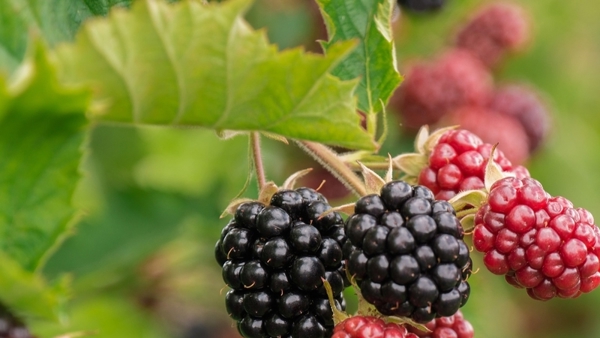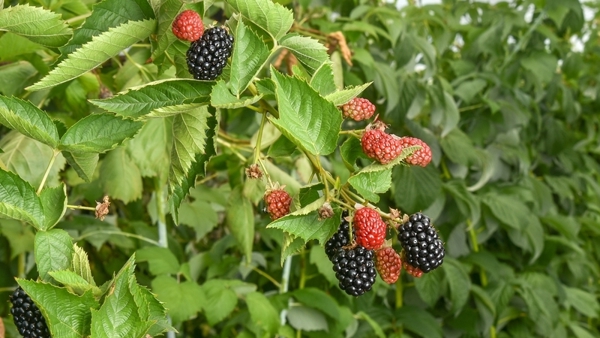Yates Account
Join now
Create a Yates account today!
Sign up to join the Yates Garden Club for monthly e-mails packed with seasonal inspiration, tips for success & exclusive promotions.
Plus if you’re a Garden Club member you can take part in the Yates Growing Community - a blog to share successes, get advice & win prizes in fun challenges along the way!

Forgot password
Enter the email address associated with your account, and we'll email you a new password.

Blackberries (Rubus canadensis) are amazing to eat fresh from the plant or made into jams or pies. They’re quite vigorous growers, so ensure there’s room in the garden and also, train them to grow on a trellis – makes pruning and harvesting more manageable!
Winter is a good time to think about planting blackberries - packaged blackberry canes appear in the shops at this time of year, which makes for easy transporting and planting.
How to grow Blackberries in a garden
- Improve the soil prior to planting by mixing in some Yates Dynamic Lifter Organic Plant Food. Good soil health and structure helps the soil hold onto moisture and nutrients; and improves plant health and growth.
- Set out the dormant canes 1.5m apart, in rows 2m apart.
- Canes can be tied together loosely with twine. If using a trellis or a structure for blackberries to grow on, make sure this is in place at planting time.
- After planting, water in well. Keep soil moist and water as required.
- Blackberries continue to bear for many years. Pick fruit when ripe and well coloured.
- Feed with Yates Thrive Citrus & Fruit Granular Plant Food in early spring and late summer. TIP: For an added nutrient boost, feed with Yates Thrive Strawberry & Berry Fruit Liquid Plant Food weekly during the flowering/fruiting season.
- Once or twice a year, apply Yates Nature's Way Organic Compost & Soil Improver and Yates Dynamic Lifter Organic Plant Food to maintain soil health and structure.


Growing tips
-
Blackberries should be planted in rows running north to south so canes receive plenty of sunshine.
-
Fruit can get spoilt from extreme heat and sunshine. Cover with shadecloth to protect the fruit.
More Plants
Lemon trees can grow up to 4m, but you can also get dwarf varieties that only grow to 1.5m which are perfect for small gardens and for pots.
Feijoa
Feijoa trees are a familiar sight in kiwi gardens; they're also a great choice for an edible hedge. The delicious fruit can be eaten fresh; they’re also perfect for using in cakes, muffins, jams, cocktails, desserts, fruit salad and smoothies.
Raspberry
Raspberries are best when they're fresh, and you can’t get any fresher than picking your own! Delicious when eaten raw and in desserts, jam or jelly.
Limes
Lime fruits are known for their delicious juice and zest. A highly flavoursome ingredient used in sweet or savoury dishes and sensational in drinks.
Yates Thrive Citrus & Fruit Granular Plant Food
Fast acting, gradual feeding plant food specially formulated to grow citrus & fruit trees, with high potassium for more abundant fruit & added magnesium to help prevent leaf yellowing.
Yates Thrive Strawberry & Berry Fruit Liquid Plant Food
Provides plants with the balanced nutrition they need to produce juicy, luscious berries and healthy green foliage.
Yates Nature's Way Organic Compost & Soil Improver
Transform soil into a healthy nutrient-rich base for your gardens and lawns with Yates Nature’s Way Organic Compost & Soil Improver.
Yates Dynamic Lifter Organic Plant Food
Releases nutrients slowly, improves the structure and moisture retention of the soil and encourages earthworms and beneficial soil micro-organisms.
















Share
Share this article on social media